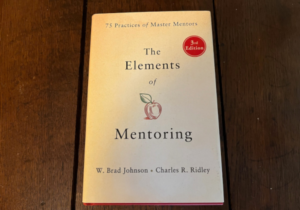Keeping Your Eye on the R01 Ball

This post condenses a Q&A led by Alex Smith, MD, MS, MPH and Katherine Hartmann, MD, PhD, on the topic of K to R conversion at the annual 2018 meeting of the Paul B. Beeson Emerging Leaders Career Development Awards in Aging. The round table included Beeson Scholars, who are K awardees, their mentors and other leaders from academic medicine and the NIH. The goals of the meeting include building the aging research community, encouraging dissemination of findings, and enhancing development of scholarship and leadership.
Q. I’ve been advised to write an R03 to have more funding and show that I can achieve my own NIH funding. Is that a good starting place?
Several facets need consideration:
- While having an R03 or R21 could provide a bit of a halo effect in subsequent reviews, other reviewers will wonder why a career development awardee did not get straight into the game.
- Being a productive independent investigator requires substantial funding over extended periods. R01s and equivalent large grants are an accepted (if contentious) gold standard for achieving independence. Pragmatically, they also provide the funds needed to build and sustain a research team, which is a fundamental need for a successful transition.
- R03s and R21s are simply not long enough and don’t carry enough funding to build a research enterprise. You are in essence an entrepreneur and must launch rapidly.
- Hypothetically if you were ready on the first day of your career development award to submit a smaller grant, bear in mind that R03s and R21s are slightly harder to get than R01s. Per NIH’s Funding Facts, success rates over the past five fiscal years for R21s are around 13.5%, and R03s around 17%. The R01 success rate for most years is 18%. Study this data for your institute.
- “High-risk, high-yield” and note of lower requirements for preliminary data for R21s does not equate to “perfect for early career researchers.” The majority of R21s go to established labs because they are a strong bet for the funding gamble to pay off. Most often the award demonstrates novel techniques or tools within a thriving research portfolio.
- R03s/R21 are equally as slow to obtain as R01s. Because resubmission is nearly guaranteed, time from first submission to receipt of funds can take 18 months or longer. You can’t wait that long to conduct research to support your first R01 submission. You need more immediate pilot funds if your K cannot support key research components.
- It’s very difficult to generate data, get it published, and integrate it into an R01 application in the short time frame of these grants because of the delay built into receiving an award. In the session prior to this discussion we created timelines that demonstrated that K-awardees with a five year grant need to submit a first R01 no later than the middle of the third year of funding to allow for revision and resubmission. Optimally you’ll submit earlier (see discussion of overlap of K and R below).
Q. What is the place for R03 and R21 grants?
- To branch out from your current line of research and build a base to move to a new area.
- To validate a method, do a feasibility study, or pursue another set of experiments or analyses that aren’t enough to drive an entire R01.
- To pull out a strong aim from an R01 application that got mixed reviews and turn the well-reviewed aim into an R03 while you regroup for the R01.
Q. I’ve been told I don’t want to get an R01 too early. Won’t I lose my K award?
- Creating a timeline is very informative: map when you will finish crucial data collection, when you will submit key materials for publication, and when you anticipate being ready to submit an R01 award. Be sure not to think only in terms of scientific readiness. Allow 16-20 weeks to prepare all the components of the grant including details like staffing, subcontracts, letters of support, and locking in co-investigators. Then allow for the NIH review and resubmission dates, remembering to extend the horizon past review to dates of council and possible start of funding.
- It is rare that K awardees are ready to play professional ball, aka submit an R01, in the first year or two of preparation. Few individuals need to worry about going too fast. Most need to worry (based on timeline above) about starting too late.
- Career development awards pay for the scientist, not the science. Wouldn’t you rather have a larger budget for your science and for key personnel in your research group?
- Federal career development awards allow for up to two years of overlap of a K award with an R01. This is magic because it preserves a high level of protected time (which you will never again receive on a single R award) to learn how to play and hire and coach your team on your way to complete independence and smooth function.
- Anecdotally, a mentor in the group noted an extremely unusual K awardee who submitted an R01 around 8 months into her K award and was funded on the first submission. The hypothetical question: was she was worse off? Of course not; she still had two additional years of 75% protected time and $2.7 million to seriously drive her science and build a bigger team. It also came with the psychological advantage of not chasing independence close to tenure and promotion review.
Q. How much preliminary data do I need to support an R01?
- It’s not just about data. You do need to support claims as strongly as possible – provide actual data in the grant. Do not expect reviewers to go look at your papers. They will, but for other reasons. They expect you to distill key information in the text.
- Remember reviewers consider many categories of information to judge if you are prepared to conduct an R01-scope study. The rationale and scientific thought model must be airtight and clear and the approach must be attractive. Beyond that reviewers will also consider whether you have:
- Shown them that you and your team are capable of doing the technical aspects of the work. [feasibility]
- Published work that supports your hypotheses or led to your hypotheses. [evidence]
- Published work that demonstrates #1 above. [proof of technical ability]
- Embedded unpublished findings in your application that support your hypotheses or demonstrate feasibility.
- Provided publications, data, or letters from others that support hypotheses or feasibility.
- Argued effectively from analogy to similar model systems or study approaches that you are likely to succeed.
- Recruited similar participants (or acquired similar specimens) at the proposed pace. [proof of concept]
- Led studies of comparable design or complexity even if on another topic. [capability/experience]
- Completed key approvals that could slow or prevent the research such as IRB approval, protocol registration, or IND documentation. [administrative readiness]
- Research team of sufficient skill to do the described work.
- Have in place key infrastructure such as databases, electronically programmed and ready to administer instruments for human subjects, quality control procedures for assays, training manuals, etc. that will be required to function rapidly at the highest level. [functional readiness]
- Collaborators who are contributing their expertise to your work (as opposed to giving the impression you are continuing the work of a mentor).
- Calls from national organizations, NIH, and/or thought leaders for the work you are proposing, suggesting it is valid and important.
- Ask yourself, have I provided what they need to know across my entire grant from the abstract to body, budget justification and biosketches that convinces them I am capable and ready to do this work?
- Get experienced reviewers to candidly review your grant, asking specifically, have I convinced you this is important, well-founded, and do-able?
Q. Should I aim for a specific RFA?
- A PA – program announcement – yes. An RFA, generally, no.
- Exceptions to avoiding RFAs for first grant applications would include calls seeking specific candidates such as under-represented minorities working in a narrow content area or instances in which your work or comparable work is cited in the RFA as the foundation for the focus of the RFA. Be sure experienced mentors read it the same way.
- Remember many RFAs are “wired” to draw out particularly strong existing teams. Program officers are in an awkward situation of knowing this is typical but not being able to state that it is a pattern. You will go up against bigger dogs for limited resources.
- If the RFA does not allow resubmission, aka is a one-time offer, be especially cautious.
- Rarely, a team led by an early career investigator can justify responding to an RFA if it will drive them to move faster towards completing a research protocol and preparing a related grant. If you and collaborators would write exactly the same grant with or without the existence of the RFA it might be a more logical choice. But don’t lose sight of the timeline. Even a well-targeted diversion is still a diversion since you will not be able to submit the work as an investigator initiated RPG until the proposals solicited in the RFA are reviewed. And in some cases of uncertain score, awaiting a decision of NIH Council can further delay teams.
More Resources
BioScience Writers – Should I Apply for an R01, R03, or R21 NIH Grant Award?
NIAID – Comparing Popular Research Project Grants: R01, R03, or R21 (Key quote: “R21 projects should be distinct from those supported through the traditional R01 and are not intended as a bridge between training and obtaining an R01 grant.”)






2 Comments
Here’s one thing I didn’t see mentioned up there:
TALK TO YOUR PROGRAM OFFICER(S)!
Every piece of advice in this post *could* potentially be right on target or waaaaaaay wrong, depending on the circumstances. Your PO can help understand and navigate those circumstances. Start talking to her/him early in the process. The more time to chart your course, the better. Know that you may want to talk to more than one Program Officer, particularly transitioning from a training/career development award to an R01. As just one example, some parts of NIH cluster the training/CDA’s with a few PO’s, because those grants are rather specialized in terms of who applies for them and what the requirements of the mechanisms are. When you write your R01, you may be dealing with a brand new PO, so best to get to know her/him from the get-go.
I could go on, but you get the idea. Again, for those who came in late:
TALK TO YOUR PROGRAM OFFICER(S) EARLY!!!!
This is a great post. I am starting year 2 of a 4 year K so I am now thinking about my first R01 for hopefully Feb 2020. A related question: I have heard mixed things about having your K mentor on your first R01. I have spoken people who have done this and did fine and others have said that they didn’t do this to avoid not appearing they are branching off.
I am not sure if there is a standard answer to this? I wanted to have my K mentor on as a a Co-I and we have a great relationship so wanted to keep our collabration going. He certainly doesn’t expect to be on it in contrast to a prior mentor who wanted to be on everything for less than selfless reasons. Thanks!